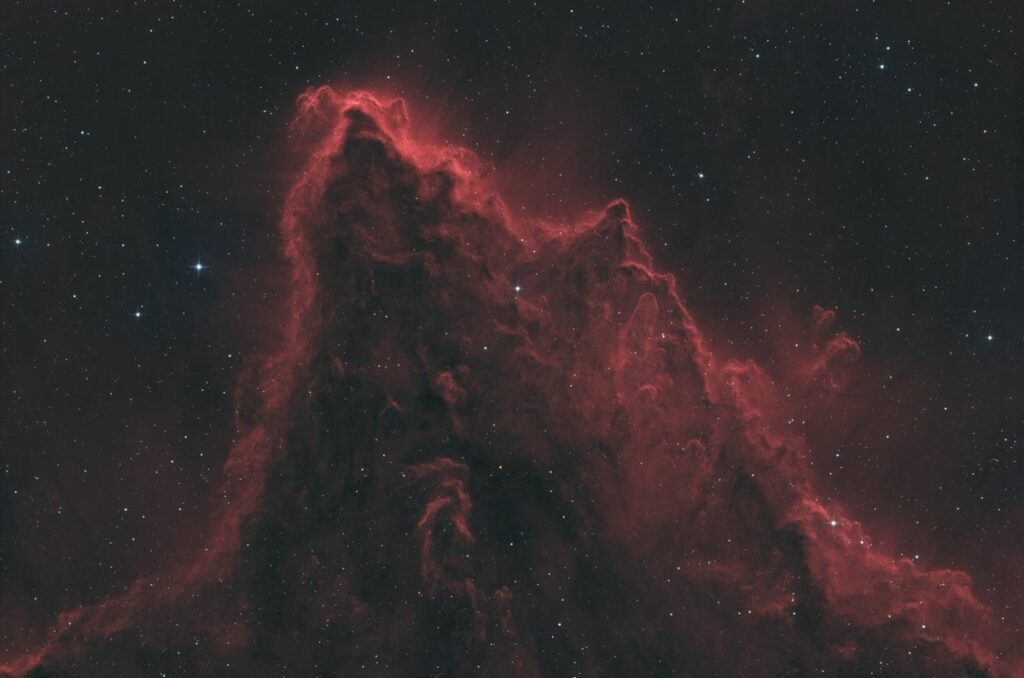
Bright city lights often obscure the wonders of the night sky, making it difficult for many to appreciate celestial marvels such as planets, stars, and galaxies. In response, the David Malin Awards celebrate the art of astrophotography, bringing together stunning images that capture the beauty of the cosmos. These awards, organized by the Central West Astronomical Society and hosted at CSIRO’s Parkes Observatory Visitors Centre, recognize the talent of astrophotographers from around the globe.
Renowned astrophotographer Alex Cherney, who has gained acclaim for his breathtaking images featuring CSIRO’s radio telescopes, served as a judge for this year’s competition. Cherney emphasized that the criteria for selection went beyond technical proficiency. “The best astrophotographs aren’t just documentation—they reveal the cosmos in ways that inspire and educate,” he stated. The awards comprise six categories, each designed to highlight unique techniques and the storytelling potential of astrophotography.
Celebrating Artistic Vision in Astrophotography
The awards are named in honor of David Malin, a pioneer in the field who believed that astrophotography should merge scientific accuracy with artistic expression. Cherney elaborated on this philosophy, noting the various ways astrophotographers capture the universe, whether through the majestic framing of the Milky Way or the intricate details of a nebula.
One standout category, Nightscapes, invites photographers to merge terrestrial landscapes with the expansive night sky, creating a compelling connection between Earth and the cosmos. Janice Terrill received high commendation for her image featuring a mangrove lake illuminated by a storm, with the comet Atlas streaking across the sky. This gripping juxtaposition raises the question of which phenomenon commands attention first: the comet or the lightning?
For aspiring young photographers, the Junior category serves as a platform for those under 18 to explore their passion for astrophotography. Cherney noted that the judges were particularly moved by images that evoke emotions or provide fresh perspectives on the universe. The winning entry by Charlie Marzolla, depicting the Eagle Nebula, exemplifies this approach. He reflected on Malin’s guiding principle that aesthetic appeal should precede technical skill in the evaluation of astrophotography.
Another notable category is Widefield, which focuses on capturing expansive regions of space rather than individual celestial objects. One of the highlighted entries was Rod Prazeres’ image of the Vela Supernova Remnant, a portion of the remnants from a supernova explosion that occurred approximately 11,000 years ago. This striking image showcases the enduring legacy of a once-massive star and demonstrates the power of astrophotography to convey the vastness of the universe.
Inspiring Future Generations
The David Malin Awards not only recognize current talent but also serve to inspire the next generation of astrophotographers. By showcasing the beauty of the cosmos, these awards encourage individuals of all ages to step outside, look up, and engage with the universe. The competition continues to foster a deeper appreciation for both the scientific and artistic aspects of astrophotography, ensuring that the wonders of space remain accessible to all, even in the brightest urban environments.
As the awards continue to grow in prestige, they highlight the blend of creativity and science that defines the field of astrophotography. With each passing year, the images submitted reveal not only the beauty of the night sky but also the stories that lie within it, urging viewers to explore the cosmos beyond the confines of city lights.







